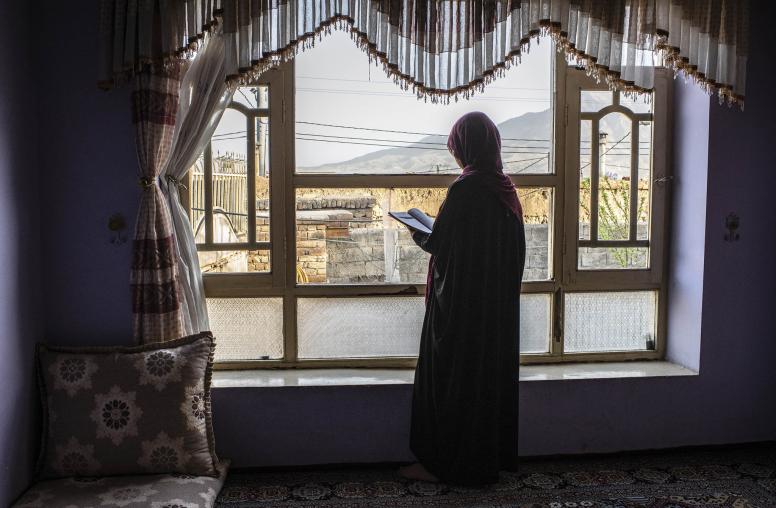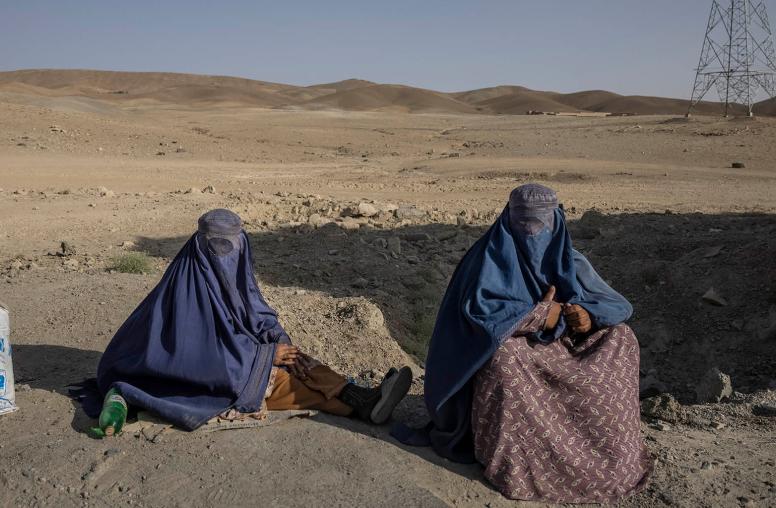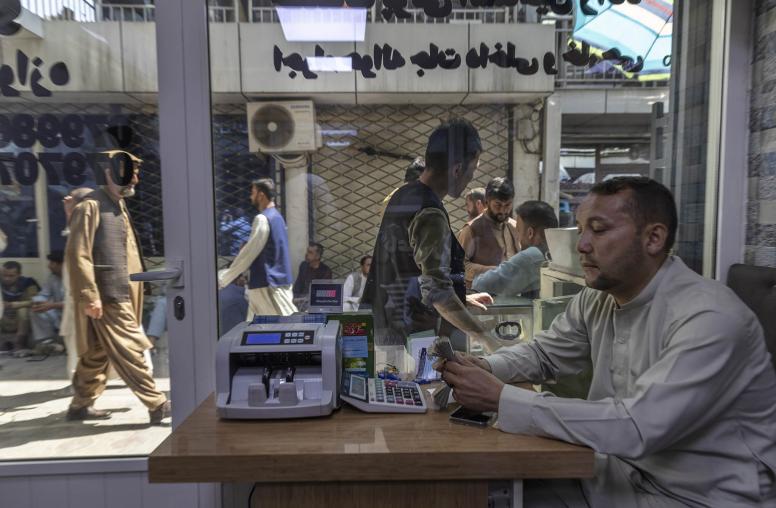Elite Capture and Corruption of Security Sectors
Executive Summary
Closing the Effectiveness Gap
The objective of US security sector assistance is to help build effective, accountable, responsive, transparent, and legitimate security sectors in partner nations to address common security risks. Such action ultimately benefits US national interests, as when the United States modernized West Germany’s military during the Cold War; when US security sector support to South Korea helped the United States deter regional threats; and when, in Ukraine, US security sector assistance contributed to success in fending off Russian aggression in 2022. Similarly, the United States helped Georgia turn its traffic police into one of the most trusted institutions in the country, supported Albania as it updated the governance of its security forces, and assisted Colombia in making progress toward ending its long-standing armed conflict.
Despite these and other successes, policymakers and practitioners in the United States and other donor countries are also confronting an effectiveness gap between what they want security assistance to achieve and what is actually happening in the field. To close this gap, it is important to take a hard look at a recurring yet overlooked phenomenon—elite capture.
A Wider Lens for Improving Security Sector Assistance
Elite capture happens when powerful actors in a country distort the provision of public services; what should serve everyone is turned into a means for private gain. When corruption of this kind occurs in the security sector, elites may influence police, military, or members of the judicial system and may use them to pursue their own interests. For example, elites might use the armed services to hold on to power, or they might deploy police to mobilize supporters during elections and suppress rival groups. When these forms of internal elite capture are deeply rooted in countries affected by conflict, external security aid can be misused and may even fuel more violence.
More positive outcomes are possible, however, even in countries where the security sector is captured by powerful groups. If donors take elite capture into account from the outset, they can make better decisions and reduce unintended consequences. And if more rigorous analysis occurs and course corrections are made as programs are rolled out, donors and their partners will be better able to foster impactful change.
What we learn when we look through the lens of elite capture:
- Security forces may not be neutral. Where elite capture prevails, security forces rarely serve as neutral service providers that stand apart from societal divisions. In most conflict-affected countries, security forces reflect and serve those divisions.
- Building up a country’s security forces does not always make the public safer. Sometimes elites use security forces to serve their own interests, perpetrating violence and abuse and fueling drivers of conflict.
- Governance reforms can spur resistance. Elites often fight these reforms and use them to empower their own factions against others.
How Elite Capture of the Security Sector Works
Although many practitioners in the field are generally aware of elite capture, its effects on the security sector have not always been fully investigated. To reverse that trend, this Working Group conducted a two-year study that included four in-depth case studies. Each case study featured a different US experience with captured security forces abroad. The following Q&As summarize what we learned.
Q: Who are elites and why do they capture security sectors?
A: Focus on incentives.
Elites are individuals or groups who hold a disproportionate amount of political power, wealth, or influence over policy decisions or their implementation. Elites rarely act on their own; they rely on allies who may have varied and hidden relationships to the security system. When they capture their countries’ security resources, elites serve their own interests as well as the interests of people in their network. To better predict what elites will do, it is important to analyze common incentives.
Incentives for elite capture
- Coup-proof: ensure the survival of the regime by preventing threats from the armed forces.
- Mobilize politically: foster political support and loyalty by favoring certain groups.
- Accumulate wealth: capture public resources or protect commercial monopolies.
- Counter asymmetric security threats: collaborate with nonstate armed groups to combat insurgency, organized crime, or terrorism.
Q: What tactics do elites use to capture security systems?
A: Mechanisms that create loyalty.
To capture security institutions, elites manipulate the core processes and procedures of security institutions. But they often do so discreetly, in ways that make corrupt practices seem like the way things have always been done. Most of these tactics allow elites to reward allies in their networks.
Elite capture tactics
- Personnel: manipulate personnel recruitment, promotion, and appointment to favor and reward followers.
- Financing: manipulate financing, procurement, and resource allocation to funnel resources to followers and away from rivals.
- Selective accountability: weaken accountability processes to shield elites and their allies from prosecution.
- Militarization of government: create new opportunities for fraud and abuse by appointing active-duty military to civilian ministries, legislatures, and election campaigns.
- Specialized units: co-opt and use special military units to target rivals, repress protests, and protect the regime.
Q: What are the potential consequences of elite capture?
A: Violence and instability.
Elite captured security systems can often fuel violence, human rights abuse, and extremism. These effects are caused directly when compromised security forces repress, kidnap, torture, or intimidate opposition. The indirect effects caused by elites fomenting grievances or otherwise undermining security services and governments can also cause untold suffering, undermine a country’s ability to respond to security threats, and may spur instability far beyond a country’s borders.
Consequences of elite capture
- Tactical gains increase violence in the long term: when elites allocate officer appointments and public resources to limit conflict in the short term, these exclusive arrangements lead to intergroup grievances and the risk of violence in the long run.
- Ineffective security forces: when elites manipulate the personnel processes and budgets of security forces, inefficiency and poor battlefield performance result.
- Human rights abuse: captured security forces may perpetrate abuse on behalf of elite interests.
- Democratic erosion: ineffective or abusive security forces weaken trust in the state.
- Insurgency and extremism: when captured forces exclude or target certain groups, they fuel division, the risk of civil war, and the potential emergence of criminal states or proxy war battlegrounds for competing external powers.
- Regional and international instability: elite capture of security forces strains regional relations and may set off complicated internal conflicts in neighboring countries.
Patterns of Unintended Consequences
Three patterns of unintended consequences can occur when the United States and other donors provide assistance to elite captured security systems.
Pattern 1: Limited leverage results in limited impact.
External security investments often fail because elites often shape the rules of the game, and external actors lack the leverage to change these rules.
Pattern 2: Sometimes assistance can make things worse.
When a country is facing a severe security crisis, donors may feel pressure to achieve a quick win. Yet operations that counter short-term threats may undermine long-term solutions.
Pattern 3: Donors face entrenched resistance to change.
Efforts to limit elite capture inevitably confront the interests of those with the most power to block or undermine reforms.
Recommendations for Action
The Working Group’s analysis of elite capture in the security sector points to an acute challenge, one that practitioners must confront if the potential of security sector assistance is to be fully realized. Our analysis also revealed distinct opportunities for reaching that potential. As we considered how best to seize these opportunities, our thinking coalesced around five principles for action.
- Detect elite capture: Integrate the elite capture lens into intelligence, political economy analysis, and other analytical tools that guide assessment, program planning, and policy decision-making.
- Do not enable elite capture: Reduce the likelihood that donor policies contribute to elite capture by enhancing the transparency of security assistance, improving risk management and accountability for security sector assistance, and increasing domestic efforts to prevent elite capture in the security sector.
- Confront elite capture: Use decision points and off-ramps in assistance programs, targeted sanctions, and multisectoral anticorruption and governance initiatives focused on the security sector.
- Mitigate elite capture: In captured environments, operate multilaterally, strengthen civil society oversight, conduct cost-benefit analysis of providing security sector assistance and limit the scope of such programs if necessary, and support approaches that tackle the drivers of elite capture.
- Play the long game: Build effective and accountable security forces, strengthen security governance, and address the drivers of elite capture and violence.
Our principles focus on achieving practical results, but they also respond to the broader system, of which the security sector is just one part. The broader system includes the economy, power competition, conflict dynamics, demography, civil society, history, and culture. All of these aspects are interwoven with security issues, requiring that we take the big picture into account when problem-solving. These connections can also foster breakthroughs, as when solutions in one area have a positive effect on others. If a dominant part of the system, such as the security sector, is able to achieve reforms, improvements in other societal realms may follow, with the net effect of reducing violence and increasing stability.
The recommendations in Section III offer action steps derived from these five principles. Our recommendations are written for the US government and other donors, multilateral organizations, civil society, and members of academia who wish to contribute to greater understanding about how elite capture works and how it can be combated.
Working Group Members
- Ambassador Karl Eikenberry, co-chair
- Ambassador Dawn M. Liberi, co-chair
- Ambassador Anne W. Patterson, co-chair
- Ambassador William B. Taylor, co-chair
Executive Secretariat
- Dr. Louis-Alexandre Berg
- Mr. Philippe Leroux-Martin
- Mr. Ian Platz
- Ms. Leanne Erdberg Steadman
- Dr. Calin Trenkov-Wermuth
- Ms. Sarah Yager
- Mr. Jacob Zack
Research Team
- Ms. Nicole Cochran
- Dr. Cecilia Farfán-Méndez
- Dr. Erica Gaston
- Dr. Moses Khisa
- Dr. Michael Lettieri
- Dr. Sabastiano Rwengabo
- Dr. Mykhailo Zhernakov
Editorial Support and Graphics
- Ms. Amy Clipp
- Ms. Anna Lawrence
- Mr. Daniel Kohan (Sensical Design)



